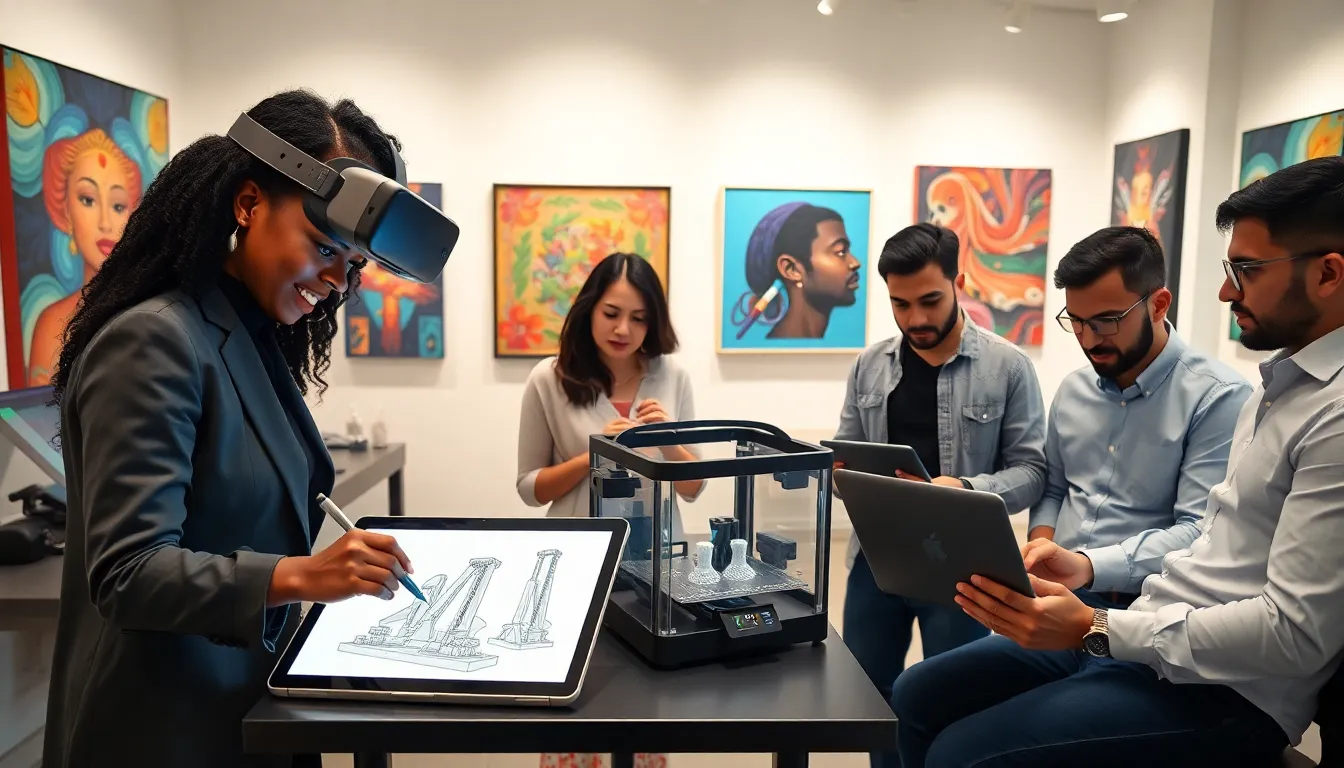In a world increasingly defined by digital distractions, the merging of technology and art creates a tantalizing realm where creativity knows no bounds. Imagine wandering through a gallery where brush strokes are replaced by pixels, and the artist’s true muse isn’t just a canvas, but an algorithm. This isn’t just a flight of fancy: this is the brave new world of technology art. If you’ve ever wondered how your smartphone could inspire a masterpiece or how the latest web tools spark artistic revolutions, you’re in the right place. Buckle up, because we’re about to dive deep into the vibrant intersection where innovation meets creativity.
Table of Contents
ToggleUnderstanding Technology Art

The Role of Technology in Contemporary Art
Technology has infiltrated almost every aspect of life, and the art world is no exception. Gone are the days when a paintbrush was the sole instrument of expression. Nowadays, artists use computer software, virtual reality, and even artificial intelligence to create captivating works that challenge conventional boundaries.
For many artists, technology serves not just as a tool, but as a collaborator offering endless possibilities. Whether it’s creating interactive installations or using digital mediums to tell stories, the dynamic role of technology reshapes how art is created and experienced.
Innovative Tools and Mediums
Artists today have access to a plethora of innovative tools that can breathe life into their wildest dreams. Programs like Adobe Creative Suite, Blender, and Procreate allow for incredible levels of creativity. Besides, technologies like 3D printing and virtual reality provide avenues for creating art previously relegated to science fiction.
Imagine sculpting in a 3D environment, or stitching together sounds to create immersive audio-visual experiences. Each tool opens up new dimensions, allowing the stories and messages behind artworks to be conveyed in ways traditional mediums can’t match.
Case Studies of Technology-Driven Art
Emerging Artists and Their Digital Works
The rise of technology art isn’t limited to well-known institutions. Numerous emerging artists are redefining what it means to create art in the digital age. For instance, artists like Refik Anadol leverage data and algorithms to transform available information into stunning visual narratives. His works blur the lines between art and technology, employing machine-learning models that interpret and visualize complex datasets.
Another example is Madeline Gannon, who uses robotics to create interactive performances that invite audiences to engage dynamically with her creations. Each artist in this realm brings their unique voice, proving that technology is a powerful medium for self-expression.
Benefits of Technology Art for Artists and Audiences
Accessibility and Engagement
One of the most notable advantages of technology art is its accessibility. Emerging platforms allow artists to showcase their creations to global audiences, breaking geographical barriers that once limited exposure.
Also, technology art can engage audiences in ways never before possible. Take augmented reality, for instance. With a simple smartphone scan, viewers can see layers of information overlaid on physical artworks, enriching their experience and understanding. This interactive element transforms the passive act of viewing into an immersive journey.
Purchasing Technology Art: A Guide
Where to Find Technology Art Online
As interest in technology art grows, so does the array of platforms selling these digital creations. Sites like Artsy and Saatchi Art feature sections dedicated to contemporary digital artworks. Many artists also sell directly from their websites or through social media channels, allowing buyers a personal connection to their favorite creators.
Alternatively, blockchain platforms are emerging. These platforms authenticate digital art, giving collectors confidence that their purchase is unique and verified.
The Future of Technology Art and eBooks
How Technology Is Shaping Art Distribution
The rise of technology has forever changed how art is distributed. eBooks are enabling artists to share their works and creative processes with ease, breaking down traditional publishing barriers. Also, virtual exhibitions allow people to experience art without the limitations of physical space.
Imagine walking through the Louvre or MoMA from the comfort of your living room, guided by an artist’s vision. This doesn’t just enhance the experience: it makes it more inclusive for all.
Redwebzine as a Platform for Emerging Trends
Redwebzine stands at the forefront of this revolution, profiling emerging artists and providing a platform for technology-driven art discussions. Its focus on innovation makes it a hub for the latest trends, giving readers everything from artist interviews to insights into the latest tools shaping the art world. Combining eBook formats with rich visual content, Redwebzine invites readers to engage deeply with technology art.


